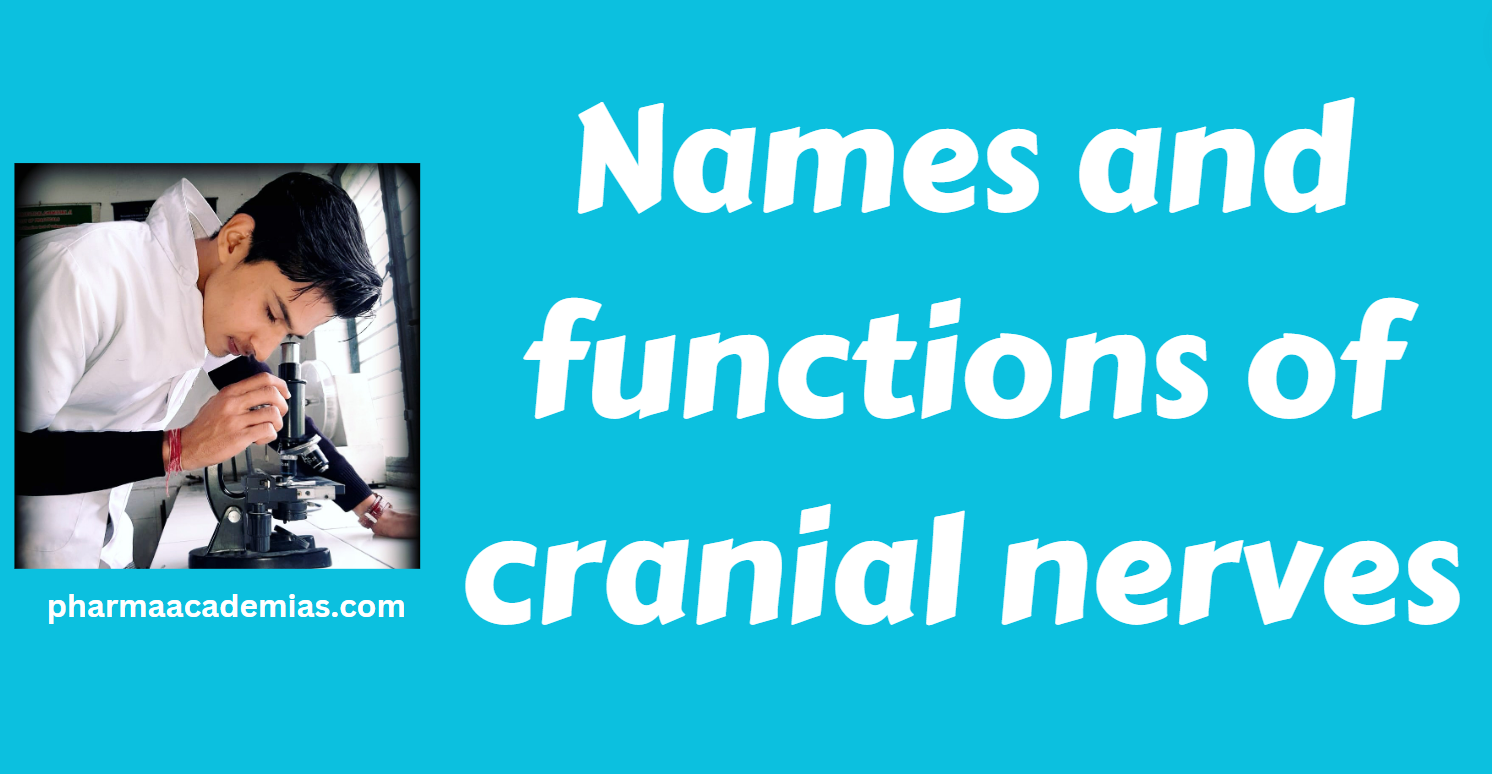The human body has 12 pairs of cranial nerves, each originating from the brain and serving various functions. Here are the names and functions of the cranial nerves:
Olfactory Nerve (I):
- Function: Responsible for the sense of smell.
- Pathway: Transmits olfactory information from the nasal cavity to the olfactory bulbs in the brain.
Optic Nerve (II)
- Function: Primarily responsible for vision.
- Pathway: Carries visual information from the retina to the brain’s visual centers.
Oculomotor Nerve (III)
- Function: Controls most eye movements, including those of the eyelid and pupil constriction (accommodation).
- Pathway: Innervates several eye muscles.
Trochlear Nerve (IV)
- Function: Controls the superior oblique eye muscle, contributing to the ability to look downward and inward.
- Pathway: Innervates the superior oblique muscle.
Trigeminal Nerve (V)
- Function: Involved in sensations of the face, scalp, and oral cavity; responsible for chewing muscles.
- Pathway: Divided into three branches – ophthalmic, maxillary, and mandibular.
Abducent Nerve (VI)
- Function: Controls the lateral rectus eye muscle, allowing for abduction (outward movement) of the eye.
- Pathway: Innervates the lateral rectus muscle.
Facial Nerve (VII)
- Function: Controls facial expressions, taste sensation on the anterior two-thirds of the tongue, and salivary gland secretion.
- Pathway: Innervates facial muscles and has branches for taste sensation.
Vestibulocochlear Nerve (VIII)
- Function: Responsible for hearing (cochlear division) and balance (vestibular division).
- Pathway: Divides into the cochlear and vestibular nerves.
Glossopharyngeal Nerve (IX)
- Function: Controls taste and sensations in the posterior one-third of the tongue, as well as swallowing muscles.
- Pathway: Innervates the pharynx and tongue.
Vagus Nerve (X)
- Function: Regulates involuntary bodily functions, including heart rate, digestion, and respiratory rate.
- Pathway: Extends to various organs in the thoracic and abdominal cavities.
Accessory Nerve (XI)
- Function: Controls neck muscles, including the sternocleidomastoid and trapezius.
- Pathway: Innervates muscles involved in head and shoulder movements.
Hypoglossal Nerve (XII)
- Function: Controls tongue movements, including speech and swallowing.
- Pathway: Innervates muscles of the tongue.
Understanding the functions of each cranial nerve is essential for diagnosing and treating various neurological and sensory disorders. These nerves play a vital role in maintaining proper sensory and motor functions throughout the head and neck regions.

